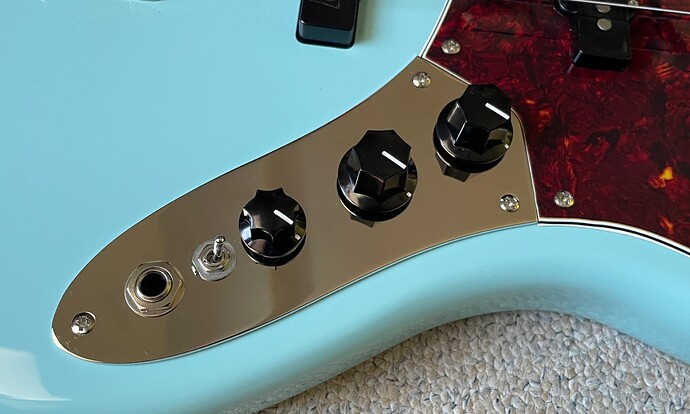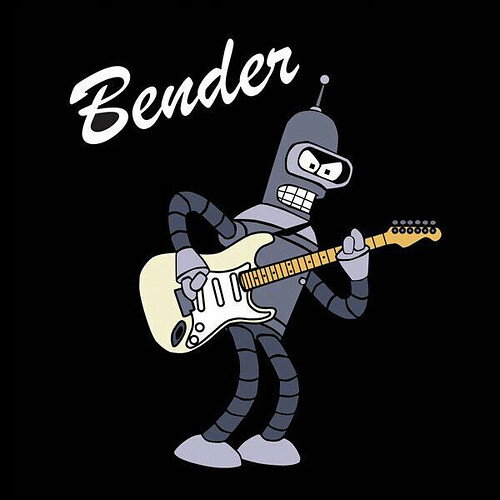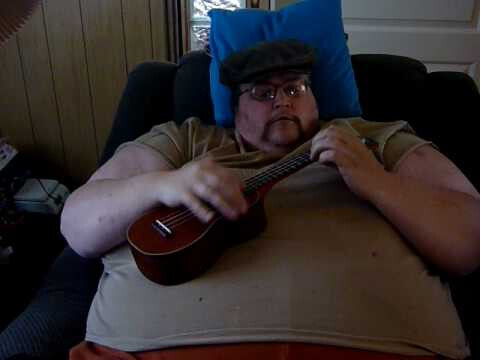I just read an interesting German review about the xBlend II on Bonedo (BQ Music Xblend I und II – sensationelle Upgrade-Elektroniken für Jazz Bass - Bonedo).
Unfortunately, model II is out of stock. But hey, it’s just electronics - should be possible to built myself? But how?
Description:
This is THE new wiring for Jazzbass with passive pickups.
This wiring offers a superior way to smoothly mix the neck and bridge pickups.
Sound differences are evenly spread out over the entire turn of the mix pot.
The whole sound of the bass opens up and the tonal diversity of your Jazzbass becomes much, much bigger than with any other loom.
Apart from the normal mixing (parallel mixing) this wiring also offers a unique stepless humbucker mixing (series mixing).
Smooth and stepless mixing from single coil to fat and loud humbucker and everthing in between!
A totally new feature that adds a fantastic new tonal range to the Jazzbass.
Most balance/blend potentiometers underperform badly for passive basses and guitars. Blend pots dull the sound of the bass, making it sound less defined and muddy. Also often all the tone differences are bunched up around the center notch making it only a slightly better tool than a pickup toggle switch.
But that’s over now! Blending pickups has never been this smooth and the Jazzbass sound stays focused and defined and even.
How does it work?
One of the pickups is selected as master pickup. The other pickup is automatically connected to the mix control and can be blended into the mix. The tonal differences are evenly divided over the total turn of the mix pot allowing for very subtle blending.
By switching on the series mode the pickups are mixed in series. Turning the mix control results in the sound gradually going from single coil to humbucker.
There are two versions. A simple version, Xblend I and extensive version Xblend II
The Xblend II has a switch for choosing which pickup is master and which can be blended in plus a switch for mixing in parallel or mixing in humbucker mode.
Extremely versatile and an enormous range of sounds, more than half of which weren’t possible with a Jazzbass before.
The Xblend I has a fixed master pickup. When installing you decide if the bridge or neck pickup is master. The other pickup can be dialed into the mix in parallel or in series.
This setup is enough for players who, for instance, always play with the bridge pickup on and want to add a bit of buttom end by mixing in the neck pickup.
Master volume (controls the total volume of the bass)
Mix control (dials in the desired amount of the non-master pickup)
Tone control (standard tone control .047 tone cap)
Mix switch (choose between standard or humbucker mixing)
Pickup switch (choose which pickup is master and which can be blended in)
This wiring has a more defined sound, opener and brighter than the traditional Jazzbass wiring.
Personally I like this modern sound better but….that is just my personal taste.
A small jumper switch is added to the volume pot which, when engaged, gives you the traditional, slightly darker, Jazzbass sound.
This loom was specially designed for Xander Vrienten, one of the best bass players of The Netherlands. Xander uses the simple version (Xblend I) in his 1968 Fender Jazzbass. He plays from with the bridge pickup full on for maximum Jazzbass growl and adds a tiny bit of humbucker to support the bridge sound.
Also for left-handed basses with reverse turning controls!!!
Also available as a loom only and for Precision basses with a JB pickup in the bridge position.



